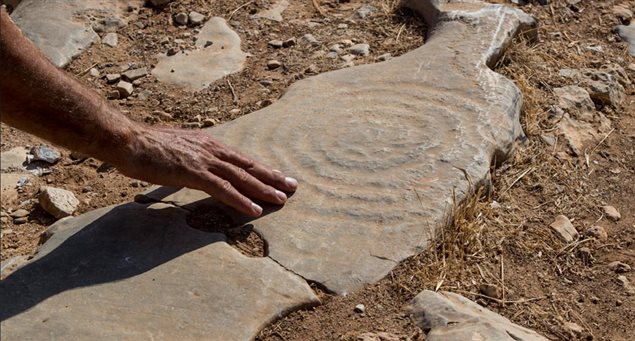
Take a walk around Iraklia and you might witness ancient petroglyphs, ancient rocks carved with spiral and “bulls-eye” formations that have surfaced over the years on various parts of the island.
Since the late 1960s, when the first Speires as they are known was documented, 25 variations of the inscribed rock carvings have been identified on the island.
Most are intact, on rocks. Three others have been found on plates and are on exhibit at the Archaeological Museum of Apiranthos on neighboring Naxos. The spirals were likely carved using a sharp instrument most likely of emery.
In the past, residents believed that pirates might have left them behind as signs of where they buried their treasure. Later claims talk about their astronomical significance, documenting the Cycladic peoples’ knowledge of astronomy at the time, while others believed they were used as signage for nearby homes, or burial grounds. According to this theory, the single spiral seems to indicate a burial ground, while the double a settlement.
The mystery of what these spiral-inscribed rocks signify continues.
Over the years, people from Iraklia have taken it upon themselves to research and document their findings and alerting officials at the Cyclades’ Archaeological Conservancy. According to archaeologists at the conservancy and publications written on the subject, the sediments date back centuries to the Early Bronze Age (3rd millennium BC).
The petroglyphs or rock art with the spiral motif also appear in other parts of Greece and around the world. In fact, the spiral in considered the most popular form of “rock inscribed expression” after living depictions (human/animal).
In Greece Speires have been found on the islands of Naxos, Andros, Astypalea, Crete, and in other areas including Pylio, Larissa, Thessalia, Kavala, Macedonia.
On Iraklia the most visible is on the ground in the beginning of hiking trail # 7.
On Naxos, two plates (one with with spirals and one with the “bulls-eye” scheme) are on view at the Archaeological Museum of Apiranthos.




